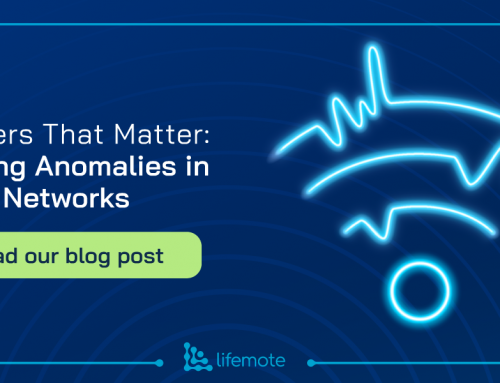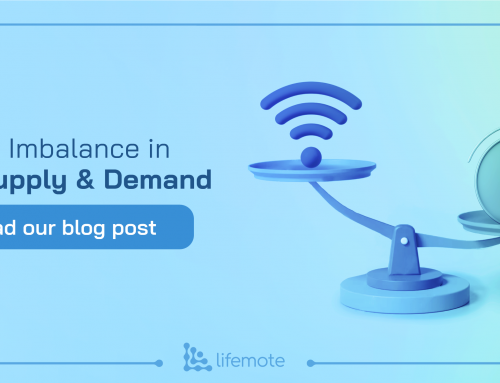The internet, for most people today, has become the main source of work, socializing, learning and entertainment. In recent times, especially after the pandemic, people began to use the Internet for more and more of their everyday activities. As people have gotten used to the convenience of using the Internet for all of their needs, such as ordering groceries with a simple tap on their mobile phones during a meeting, they have gotten more and more reliant on their Wi-Fi.
This huge bump in Wi-Fi usage has increased the expectations of people. They expect to be able to attend conference calls and share their screen from anywhere in the house; their bedroom, living room, kitchen or even the balcony. Hence, a strong Wi-Fi signal all around the house has now become a must. This is where the importance of Wi-Fi coverage comes into place. The ideal scenario would be having good coverage all the time all around the house, but this is of course not the case in the majority of the existing household setups. Therefore, more and more people have begun to reach out to their ISPs due to coverage issues, and in fact, it ranks as one of the most common problems in the field, affecting approximately 25% of the population. For detailed information about the issues observed in the population, feel free to check out the introductory “The Playbook: An ISP’s Guide For Providing The Best In-Home Wi-Fi Service” blogpost.
In this blogpost, we are going to highlight the significance of the Wi-Fi coverage problem that requires attention from ISPs. We will then focus on real-life customer experiences, highlighting the frequency of these issues, and provide solutions to address them.
How Important is the Wi-Fi Coverage Problem
Major Factor on NPS & CSAT Scores
Customers can quickly and easily recognize when there is a Wi-Fi coverage problem, hence it is a major factor in customer churns. Once a customer is asked to fill out a survey about their Internet quality, one of the first things customers talk about is their Wi-Fi coverage since it is easy to notice and easy to communicate.
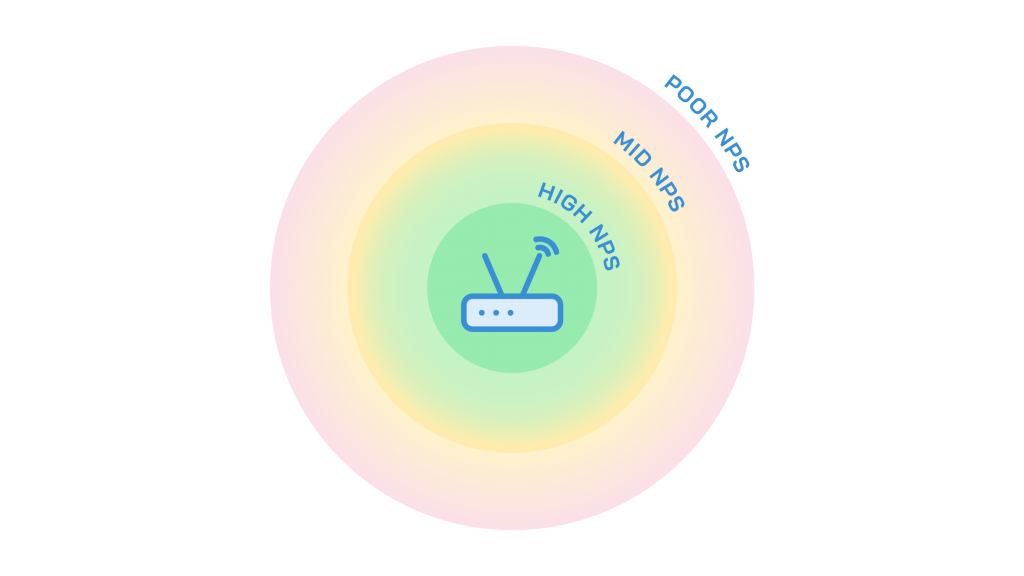
Figure 1: Wi-Fi Coverage impact on NPS
A sample survey was conducted on broadband customers and as seen clearly in Figure 1, people give much lower NPS scores if they suffer from poor Wi-Fi coverage. This is a clear indicator that ISPs need to focus first on solving the Wi-Fi coverage problems since it has a major impact on customer satisfaction.
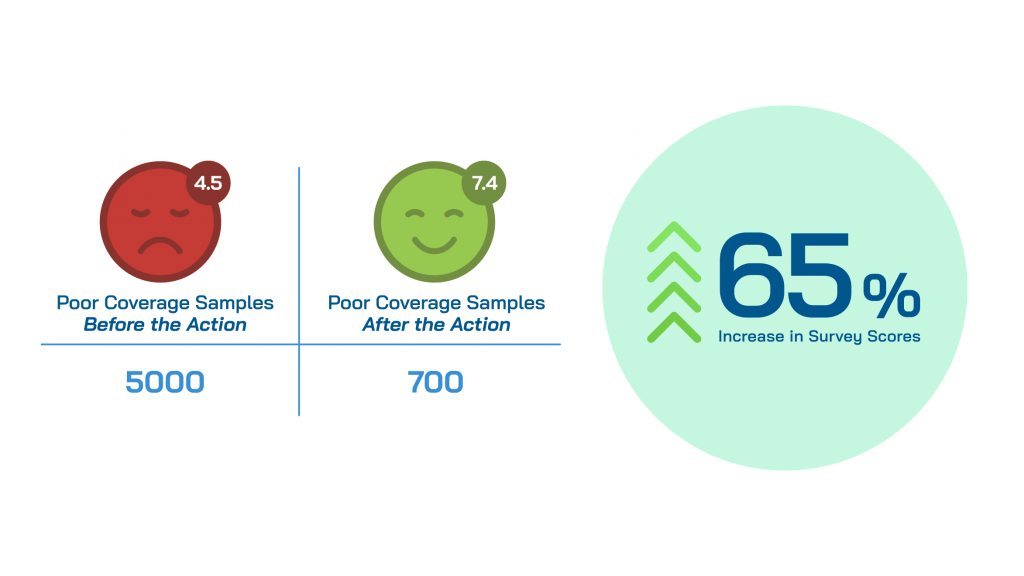
Figure 2: Before and after action poor coverage samples
Another survey was conducted on different broadband customers that received a CPE with a higher coverage area, and it is seen clearly in Figure 2 that once people spend significantly less time in poor coverage; their Wi-Fi satisfaction increases significantly as well.
Industry Response to Wi-Fi Coverage Problem: Mesh Networks
Over the years, the Wi-Fi industry made necessary developments and conducted many tests to make sure that the new technology provides better Wi-Fi coverage. The most effective solution according to the industry is using a standard based mesh network solution. There are a few important things to focus on in both mesh and Wi-Fi 6 devices, and they are as follows:
Benefits of the Mesh Network
The main goal is always to have good coverage in every corner of the house so that the user can enjoy their reliable and high-speed 5 GHz connection on all of their devices. The industry has realized that sometimes one CPE in one household is not sufficient, therefore they developed mesh solutions. Having a well set-up mesh network enables the gateway device to share its Internet with Access Point(s) that distribute high-quality Internet to other clients connected to them.
In addition to increasing the range of the Wi-Fi, mesh networks have also two other main advantages for users:
- A mesh setup enables client steering, which means that a client connects to the mesh node that provides the best Internet connection.
- A mesh setup with a standard mesh protocol uses the internet provided to the gateway directly rather than connecting to the gateway as a client. This way, the mesh setup overcomes the burden of allocating extra resources to the communication with the gateway.

Real-Life Wi-Fi Coverage Challenges: Common Problems and Solutions
So far, we have covered the importance of the Wi-Fi coverage problem, but it’s not always easy to identify which customer needs which action. There are various reasons why customers might face Wi-Fi coverage issues resulting in complaints. In the next section, we will explore some real-life scenarios creating coverage problems and discuss how common they are.
Customers often complain about their speed test results because they never seem to achieve the agreed broadband speed. The truth is, that agreed broadband speed can be achieved only up to a certain level even with a good Wi-Fi setup. Also, numerous factors can restrict the achievable speed. 25% of households have dead zones, the most common Wi-Fi issue, leading to significantly low speeds. Ideally, customers that have these dead zones should be detected correctly and offered an ISP approved mesh solution.

Additionally, 3% have improperly placed their CPEs in areas like metal cabinets or behind TVs. Advising them to relocate their CPEs for a direct line of sight to their Internet connection point would be beneficial.

3% of users buy wireless retail extenders because they realize that they have a coverage problem. These extenders might be increasing the Wi-Fi coverage; however, these extenders provide limited Internet capacity since they do not form a standard mesh setup. They often do not support client-steering, requiring network changes as users move around. Informing customers about these limitations and suggesting an ISP approved mesh system is the right solution.

Even for customers who have an ISP approved mesh system, only 50% of their nodes are placed optimally. The customers are more likely to place their mesh nodes where they have poor coverage, resulting in a poor backhaul as well. In order to achieve the best performance; the customers should be advised to place their mesh node(s) in an ideal location between their gateway and where they have poor coverage.

Finally, in some mesh setups, the gateway is not part of the mesh system, which means only the access points form a proper mesh setup in which the gateway is not included. In such mesh setups, it is required to turn the gateway Wi-Fi off. In the field, around 1 in 3 customers with such mesh setups do not turn their gateway Wi-Fi off, which means customers might be connecting to the gateway Internet and not using the access points through the client steering. So, clients cannot connect to the nearby access points when they move around, but remain connected to the distant gateway and experience poor Wi-Fi coverage performance. These customers should be advised to turn their gateway Wi-Fi off, and only use their access points where they would benefit from the mesh network.
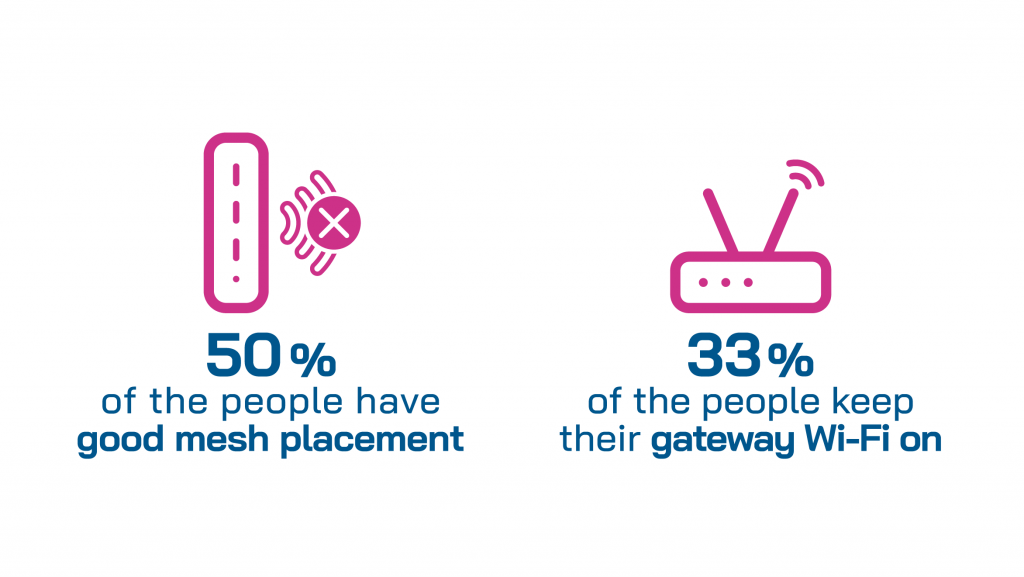
So far, we have explored the significance of Wi-Fi coverage and how to improve poor coverage. However, there are numerous scenarios to cover and navigating through different problems and potential solutions can be challenging. How then should an ISP effectively address the Wi-Fi coverage challenge?
Ideal Methodology to Defeat the Wi-Fi Coverage Problem
Currently, ISPs spend quite a large amount of time and money trying to ensure customers are happy and not planning to churn. So, when a customer calls to complain about a technical problem, the ISPs would like to do their best to help the customer. For the best course of action, here are the three ideal steps ISPs should take:
- Select the best CPE solution
- Create a flow that can instantly and clearly identify the customer’s problem to the support center agent
- Proactively reach out to the most suffering customers to fix their coverage problems
1. Select the best CPE solution
There are a lot of gateway and mesh system solutions out there, so proper detailed testing is required to ensure that the solutions recommended to the customers are truly the best.
Figure 3 compares the coverage performance of two different Wi-Fi 6 gateways. As you can see, they are performing very differently from each other. Ideally, the ISP should be able to select ‘Device 2’ after doing very detailed coverage tests.

Figure 3: Wi-Fi 6 devices coverage comparison
Another great example is that, in Figure 4; you can see the average time connected devices spend at 2.4 GHz using 2 different mesh systems. The main purpose of having a mesh network is to create a great 5 GHz coverage in the household so that most of the time is spent at 5 GHz. So, the ISP needs to be able to distinguish between good band-steering in different mesh systems and select the best performing mesh system, which in this case, is mesh system #1. More detailed information about band steering and the benefit from it can be found in the article The Price Of 2.4 GHz Captivity

Figure 4: Average time spent at 2.4 GHz in different mesh systems
2. Create a flow that can instantly and clearly identify the customer’s problem to the support center agent
Support center agents often have limited time for troubleshooting and they can only utilize the customer-provided information which is generally very limiting. So, the support center agents spend a lot of time on a call and the actions they generally take are changing the channel of the band (which is not a permanent solution) or sending a new modem or a field technician (which is very costly to the support center). A fast and efficient flow is necessary for a quick and cost-effective solution during calls.

An ideal scenario includes utilizing a data-driven tool that uses various Wi-Fi parameters (i.e. RSSI, PHY Rate, etc.) and shows the problems in an easily understood way. The ISP needs to work with the vendor of the data-driven tool closely to create a specific support center reactive flow to match the ISP’s vision. Once an ISP adopts the data-driven tool effectively, they will be able to reduce the average handling time, number of technicians visiting homes, and the number of CPEs replaced unnecessarily; because the support center agents will know which customer needs a technician visit or modem replacement.
3. Proactively reach out to the most suffering customers to fix their coverage problems
In order to increase customer satisfaction it would be best practice for an ISP to follow the status of these issues and guide customers who suffer the most on solving the problems even before the customers make a call. An ISP can conduct an ongoing proactive taskforce where they distinguish the most suffering customers and offer them a solution for their problems (i.e. a guide on better CPE/Mesh placement or a mesh upsell or a CPE upgrade).
Then the ISP can identify customers they need to reach out to through population level analysis on dashboards provided by a data-driven tool. This way it will be possible to reach out to the most unhappy customers with the right solutions (i.e. an ISP will be able to distinguish who needs a mesh node or who needs a better performing new CPE).
Final Words about Wi-Fi Coverage Problem
In order to address one of the main factors affecting customer satisfaction negatively–poor Wi-Fi coverage, ISPs need to have a well-rounded plan that covers the three essential steps outlined above: selecting the best CPE, implementing an effective reactive flow, and deploying an efficient proactive flow. This plan should aim to decrease the burden on support center calls and increase customer satisfaction. Utilizing a data driven tool allows the ISP’s support center agents to identify which problems a customer is facing and to quickly offer them the right solution, and can also help ISPs with population-level Wi-Fi coverage performance.
All of the steps outlined above might seem like a lot to do in this fast-paced industry. This is why you can reach out to Lifemote. Lifemote has dedicated teams that have helped ISPs tackle these problems (You can read more about it in this blogpost: How Can Lifemote Improve Your ISP Success Metrics?).
Some of the ISPs using Lifemote:

Lifemote’s industry experts are always here to help you on your journey to increase customer satisfaction and reduce churn rates!
About the Authors:
 Tahsin Can Şarlak
Tahsin Can Şarlak
Customer Success Manager
tahsin.sarlak@lifemote.com

Arzum Kızılelma
Customer Success Manager
arzum.kizilelma@lifemote.com
